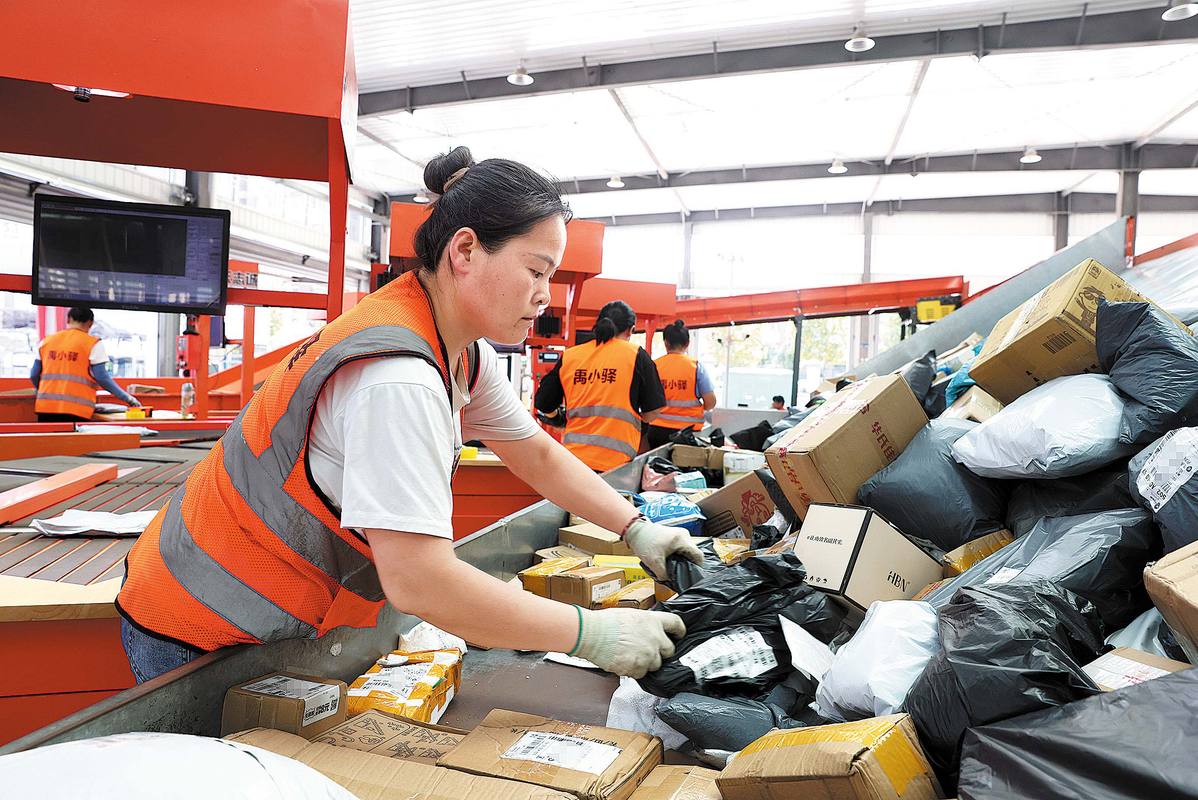China handles 95 billion parcels in first half of year


China's parcel delivery industry reached a new milestone in the first half of 2025, handling over 95 billion parcels, up 19 percent year-on-year, as the sector continues to play a growing role in boosting domestic demand and supporting the real economy, the State Post Bureau of China said on Monday.
The country's delivery network processed more than 520 million parcels per day on average, surpassing the 50-billion mark 18 days earlier than it did last year. The robust growth reflects China's steady economic momentum and the accelerating rollout of policies supporting consumption and domestic demand, officials said.
"The express delivery sector is becoming a stronger engine for stimulating consumption, energizing the real economy and serving rural and western regions," said Zhu Li, deputy director of the industrial economy department at the bureau's Development and Research Center. "It has laid a solid foundation for achieving the industry's annual growth goals."
The expanding reach of the delivery network has brought remarkable changes to everyday life across the country — from the highlands of the Xinjiang Uygur autonomous region to the grasslands of the Inner Mongolia autonomous region.
In Yarkant county of Xinjiang, Ayinur, a young Uygur woman, easily retrieved a parcel from a local pickup station. Inside were school supplies for her younger brother and pastries for her grandmother.
"We used to travel all the way to the city for this," she said. "Now it's just at our doorstep."
In the southern city of Maoming in Guangdong province, known as the "hometown of lychees", freshly picked fruits glistening with morning dew are packed and shipped through priority cold-chain logistics — by air and high-speed rail.
"We race against the clock," said a fruit farmer, surnamed Lin, while watching workers load boxes. "Customers in Beijing or Shanghai who place orders today can eat the lychees tomorrow."
To keep up with soaring demand and cut delivery times, courier companies have stepped up investment in infrastructure and smart logistics. That included expanding airfreight fleets, adding rail-air transportation routes, automating sorting hubs, building unmanned vertical warehouses, and deploying drones and driverless delivery vehicles, said Zhu, from the State Post Bureau's Development and Research Center.
In Rui'an, Zhejiang province — famous for its delicate and highly perishable bayberries — a new drone-based branch line has opened up nationwide distribution opportunities.
"Now, it only takes two hours for the berries to go from the tree to tables in Wenzhou, a neighboring city," said Gu Zhihao, head of operations at SF Express' Longhu station in Rui'an.
At 7:30 am, harvesters finish the first round of picking. A drone loaded with 50 kilograms of freshly picked bayberries lifts off, descending two minutes later at the foot of the hill at the Zhennan Bayberry Market.
From there, the berries either go to same-day delivery points within Wenzhou — shipped in blue baskets without excessive packaging — or to a nearby cold-chain facility where they are packed for nationwide overnight shipping.
"No need for fancy boxes; just pure flavor," Gu said, adding that local orders exceed 1,500 kg per day.
At the SF Express' Longhu operations center, just 600 meters from the Zhennan market, the race to deliver fresh produce nationwide is in full swing. Vacuum sealers hum, ice-packing stations work at full speed, and dedicated logistics lines ensure that bayberries will reach customers across the country the next day. For local farmer He Duanzhi, cold-chain orders now make up a staggering 90 percent of his daily sales.
Behind the scenes, technology is driving transformation. From artificial intelligence-powered sorting to intelligent dispatch systems, automation is improving efficiency and enhancing the customer experience.
"Unmanned stations, autonomous vehicles and wider application of AI are not only optimizing operations, but also improving service quality and expanding what postal services can offer," said Zhu, from the State Post Bureau's Development and Research Center.
Looking ahead, Zhu said the sector's growth momentum will continue in the second half of the year, with deeper industry integration, broader service offerings and sustained upward trends.




































